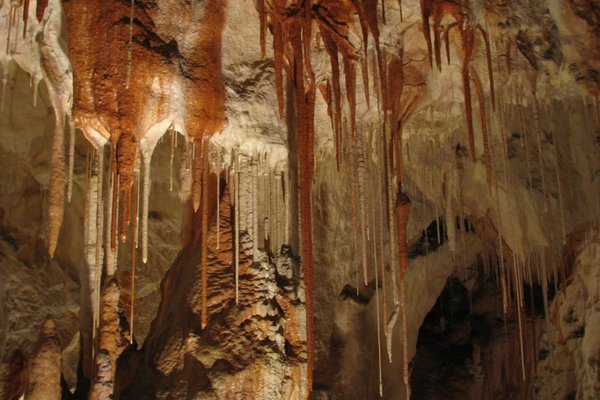Hungary, Slovakia
Aggtelek and Slovak Karst
The Caves of the Aggtelek and Slovak Karst comprise a karst cave system with a high concentration of caves and a great variety of cave types.
About 1,000 caves have been discovered in this relatively small, transboundary area. They show karst formation during both tropical and glacial climates. Over 500 troglobiont animal species can be found in its underground systems. The caves include the Silica Ice Cave and Dobšinská Ice Cave.
Community Perspective: Opinions on this site vary strongly among the reviewers. Only a couple among the 1,000 caves are open as ‘show caves’ and it is necessary to visit one of the ‘special’ caves to appreciate the site more. Hubert recommends the Ochtinská Aragonite Cave, while Martina also highlights Domica Cave with its underground river and Dobsinska ice cave. Matejicek has described the features above ground. Some of the caves (notably Dobsinska) charge high camera fees.
Site Info
Official Information
- Full Name
- Caves of the Aggtelek and Slovak Karst (ID: 725)
- Status
-
Inscribed 1995
Site history
History of Aggtelek and Slovak Karst
- 2003: Name change
- From "Caves of the Aggtelek Karst and Slovak Karst" to "Caves of Aggtelek Karst and Slovak Karst"
- 2000: Extended
- To include Dobšinská Ice Cave
- 1998: Rejected
- As Slovak Paradis and Dobsinska Ice Cave: Does not meet WHS criteria - Add Dobsinska to Aggtelek and Paradis to Spissky Castle?
- 1995: Inscribed
- Inscribed
- Type
- Natural
- Criteria
- viii
Links
- UNESCO
- whc.unesco.org
- Official
-
- anp.nemzetipark.gov.hu — Aggtelek NP
- ssj.sk — Slovak Caves
All Links
UNESCO.org
- whc.unesco.org — whc.unesco.org/
Official Website
- anp.nemzetipark.gov.hu — Aggtelek NP
- ssj.sk — Slovak Caves
Community Information
- Community Category
- Natural landscape: Karst landscapes and caves
Travel Information
Recent Connections
-
No Map
There is one at the very end of the nom…
-
Bardejov hotspot
-
Early Pleistocene
Beginning some two million years ago, e…
Connections of Aggtelek and Slovak Karst
- Geography
- Trivia
-
-
Depicted in Mizielinska Maps
Domica Cave (Slovakia); Aggtelek National Park (Hungary)See i.pinimg.com
-
- History
-
-
Palaeolithic and Mesolithic
Jasov Cave -
Neolithic age
Baradla-Domica Cave : "Natural entrances to the cave have been open from ancient times, and there are traces of Neolithic occupation." (wiki)See en.wikipedia.org
-
- Ecology
-
-
Ice cave
Dobsinska -
Salamanders
fire salamander (UNEP-WCMC) -
Significant Karst Features
Surface landscape is a temperate doline karst (AB ev) -
Underground river
Domica Cave -
Dripstone
-
- World Heritage Process
-
-
Serial Transnational Sites
-
Extended
2000: To include Dobšinská Ice Cave -
Perfect Inscriptions
1995 -
No Map
There is one at the very end of the nomination file of the extension
-
Inscribed on a single criterion only
viii. to be outstanding examples representing major stages of earth's history, including the record of life, significant on-going geological processes in the development of landforms, or significant geomorphic or physiographic features
-
- Constructions
-
-
Hospitals
sanatorium at the Peace Cave
-
- WHS on Other Lists
-
-
World Biosphere Reserves
Separate Biospheres in Hungary (Aggtelek (1979)) and Slovakia (Slovenski Kras (1977)) -
Ramsar Wetlands
Domica, 2001 / Baradla Cave System and related wetlands, 2001 -
Natura 2000
in 2004, the Aggtelek National Park and the Slovensk´y kras National Park became part of the EU-wide network of protected the Natura 2000 sites.
-
- Timeline
-
-
Early Pleistocene
Beginning some two million years ago, extensive and complex surface and underground erosion developed in this rock into classic forms of temperate climate karst.
-
- WHS Hotspots
News
No news.
Recent Visitors
Visitors of Aggtelek and Slovak Karst
- Adrian
- Alexander Barabanov
- Alexander Lehmann
- A. Mehmet Haksever
- Andrea Szabo
- Argo
- Astraftis
- Atila Ege
- Attiska
- Bamse
- BaziFettehenne
- Bin
- Bodil Ankerly
- Bropyk
- Carlos Sotelo
- Cezar Grozavu
- Christer Sundberg
- Christian Wagner
- Christoph
- Christravelblog
- Cirene Moraes
- Clyde
- Csaba Nováczky
- CugelVance
- Cyberczar
- Dagmara
- daneva
- Dan Pettigrew
- David Aaronson
- David Berlanda
- David Marton
- Dimitar Krastev
- Dolemite92
- Dr. Caligari
- Elia Vettorato
- Els Slots
- Erik Jelinek
- Errol Neo
- Eva Kisgyorgy
- fabi-ddorf
- Fan Yibo
- Femke Roos
- FS
- Gabor
- George Gdanski
- GeorgeIng61
- Harald T.
- Harry Mitsidis
- henrik_hannfors
- Highlander
- hszaby
- Hubert
- Hurrvinek
- Iain Jackson
- Ingemar Eriksson
- Ivan Rucek
- Jakob F.
- Janina Lehmann
- Jan-Willem
- Jarek Pokrzywnicki
- Jezza
- JobStopar
- Joel on the Road
- Jonas Kremer
- Jonas Martinsson
- jonathanfr
- Jon Eshuijs
- Judit Andrea Juhász
- KarenBMoore
- Ken DJ
- Kerékgyártó
- Kurt Lauer
- kutasp
- Lara Adler
- lichia
- Luboang
- Lucas Del Puppo
- Luis Filipe Gaspar
- Maciej Gil
- Mahuhe
- Malgorzata Kopczynska
- Małgosia Łupicka
- marcel staron
- Martina Rúčková
- Marton Kemeny
- Matejicek
- Mateusz
- MaxHeAnouBen
- Mikko
- MMM
- Mohboh
- nan
- Nihal Ege
- Patrik
- Peter Lööv
- Petteri
- Philipp Leu
- Philipp Peterer
- Pincze
- Purrfect
- Rafał Kałczuga
- Randi Thomsen
- Reisedachs
- Roger Ourset
- Roman Bruehwiler
- Roman Raab
- Sandinaploja
- serghei.belous
- Sergio Arjona
- Shandos Cleaver
- Slavi
- Solivagant
- Stanislaw Warwas
- Svein Elias
- Szabolcs Mosonyi
- Szabo Viktoria
- Szucs Tamas
- Tamara Ratz
- Taotao Chen
- Tarquinio_Superbo
- Tetena
- Tevity
- Thomas Buechler
- Thomas van der Walt
- Thorben
- Tim Allen
- tony0001
- Tony H.
- triath
- Tsunami
- Vanessa Buechler
- VB73
- WalGra
- Wojciech Fedoruk
- Wo_ko
- YaroMir
- Yevhen Ivanovych
- Zoë Sheng
- Zsuzsanna Forray
Community Reviews
Show full reviews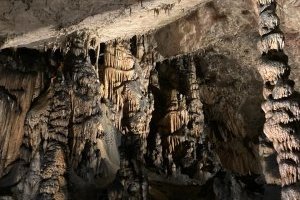
August 2024 - After visiting family near Cracow, we drove through Slovakia next day without omitting Kezmarok, Levoca, Spissky Hrad and Slovensky Raj. We arrived at the campground at Baradla in the evening and had a clear sky to see probably all stars of the northern hemisphere. Next morning, my birthday, we signed up for a tour to Baradla Cave. Really fascinting stalagnites and a nice 1,5h tour which our kids enjoyed as well. It is probably one of the easy accessable, yet fulfilling experiences. From there we continued to Tokay.
August 2016 I had visited Dobcinska Ice Cave after a day hike in Slovensky Raj.
Keep reading 0 comments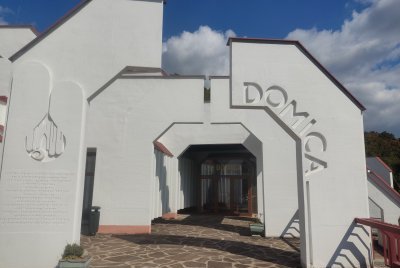
Visit: 11th of sept.2024
Every day at 06.35am there is a direct bus (bus1054) from Budapest's Puskas Ferenc Stadion (metro:Puskas Ferenc Stadion) bus station to Aggtelek and at around 14.50 back to Budapest.
The arrival time in Aggtelek is 10.45...very inconvenient as the winter schedule is already in effect so that visits to the cave take place at 10.00/13.00/15.00. Instead of waiting for two hours, I decided to walk the 2 km long path to the slovakian sister cave Domica. It took me about 30 minutes to walk on an asphalted road with almost no traffic at all to reach Domica crossing the border with its abandoned border buildings.The tour in Domica started at 12.30.There are lockers, a coffee machine, an abandoned-looking holiday complex with statues, mini trains and other Disneyland-like characters. However, the organization and foreign language skills in Domica were very good.The tour started on time. There were only two other visitors that day, two elderly slovaks. The young female guide spoke excellent english and answered all questions. I really liked the Domica cave because of its wealth of colors. I truly enjoyed my tour through the cave.
A well-informed guide and an amazingly alien underworld. Domica didnt disappoint me.
What should also be mentioned is that in the entrance building of the Domica cave, in front of the ticket offices and in an extra room, there is a kind of exhibition about the cave with many information boards and exhibits.
No photos …
Keep reading 0 comments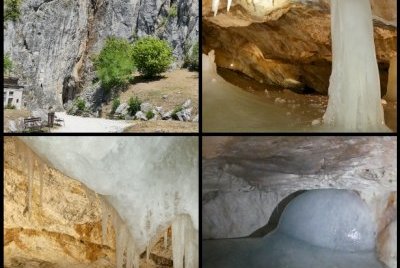
I visited this WHS in 2022, first visiting the Baradla cave in the Hungarian Aggtelek National Park en route from Tokaj, then proceeding to the Domica cave and the Dobšinská ice cave in Slovakia. This was truly just a sample of the hundreds of caves in the region, inscribed and not inscribed, but I always wanted to visit especially the ice cave in Slovakia, so I simply made an extra effort to add a stopover to the other two sites which pale in comparison to at least visit one location from Hungary too.
I was surprised by the amount of people visiting most of the caves, even the less known ones. There are several facilities and free parking near many of them but do research the opening and closing days and times before visiting. Also most caves are closed during winter. Make sure to bring at least a jacket even in summer as the temperatures in the caves are always lower than 10 degrees in most caves. The Baradla cave in Hungary and the Domica cave in Slovakia are actually one cave system, nowadays with two separate entrances in both countries. Short guided tours (around 1 hour) and long guided tours (2 hours) to the Baradla cave are offered almost every two hours. The cave has a natural entrance at Aggtelek at the foot of a high white cliff. Just before the entrance there's a UNESCO WHS inscription stone marker.
The Baradla cave has been discovered as early …
Keep reading 0 comments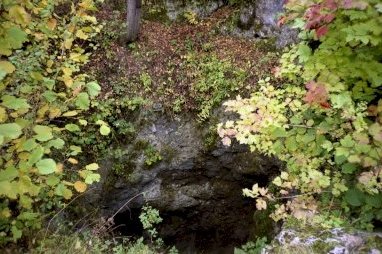
Slovak and Aggtelek Karst belongs to landscapes that I had opportunity to explore several times, from both undergound and surface aspects. I visited not only 3 caves opened to public on Slovak side, but also explored karstic landscape of Slovak and Hungarian National Parks, mostly western and central parts. Well, it is written in the nomination text that only underground systems are inscribed and noting what is on the surface belongs to WHS, but both "worlds" are interconnected. Thus, one can recognize what is "down" also by picturesque karstic structures such as sinkholes and limestone pavements that are evenly scattered in the landscape of karstic plateaus. I found it also special and worth-visiting.
From inscribed caves, I visited Domica, Gombasek, and Ochtinská aragonitová caves. All of them are beautiful, and different to each other. However, after visiting of several/many caves of this and other regions, one can have a feeling that it is difficult to distinguish what cave is "more unique" than another - I can frankly say that I am not expert to recognize an uniqueness of stalagmite...
As concerns the structures visible on the surface, I found the karstic landscape of both Slovak and Aggtelek Karst National parks beautiful and quite easy to explore. There are many marked trails in the national parks. However, the area in the close vicinity around famous caves such as Domica, Ochtinska, Baradla or Gombasek is not very special - don´t be confused. One has to climb several hundred meters up …
Keep reading 0 comments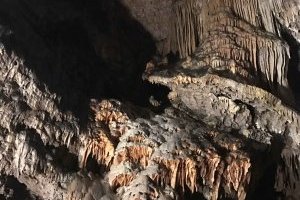
To me, the caves of Aggtelek and Slovak Karst are the best WHS we have and I'm very proud of it. Depends of course on the cave you visit, but if you had been born, let's say in Eastern Slovakia, you would have visited most of them by the time you've finished your compulsory school attendance. Summer is the best time to visit, when there's a season. Most of the caves are closed off for winter, one or two are open. I would recommend visiting the Domica cave, either from Slovak or Hungarian part. Hungarians have it opened all year round and are much more accomodating than my compatriots are, I am sad to say. There's an underground river you can ride and you will cross border and the interior decorations are pretty. Another stunner is Dobsinska ice cave. Ochtinska Aragonite cave has beautiful decorations and colourings. If you manage to find yourself skiing in Jasna and the Demanovska Freedom cave is open, do see, it's also lovely.
Keep reading 0 comments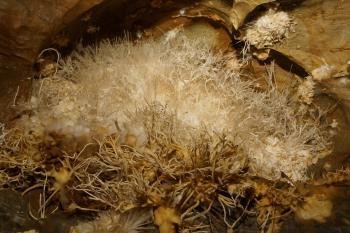
The cave system of the Aggtelek and Slovak Karst was inscribed mainly because of the high number of caves in a relatively small area and the variety of geological morphology, but less because of the outstanding value of the individual caves. At the time of inscription 712 caves were registered, 23 are listed in the nomination files (see above), today more than 1000 are known, and seven or eight of them are show caves and open to the public.
We spent one day for this WHS, we have chosen three caves that cover the diversity of the cave types: the Dobšinská Ice Cave, the Ochtinská Aragonite Cave, and the Gombasecká cave.
First, we visited the Dobšinská Ice Cave. Ice caves with year-round ice formations are relatively rare, there must be sub-zero temperatures throughout the year, at least in parts of the cave. The main attractions in the Dobšinská Cave are the huge ice block that fills almost the whole first part of the cave, and the Great Hall, where the ice is up to 26 metres thick and where you can also see ice columns and ice stalagmites. I have previously visited two ice caves in Austria, the Dachstein Ice Cave (WHS Hallstatt-Dachstein) and the Werfen Eisriesenwelt (no WHS, near Salzburg). I have to admit, that I was more impressed by the ice formations in the Werfen Cave.
Next we went to the Ochtinská Aragonite Cave (photo), definitely the highlight of our cave tour. Aragonite is a crystalline form of …
Keep reading 0 comments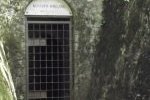
I only managed to reach four of the listed caves, three in Slovakia and one in Hungary.
Dobsinska Ice Cave : similar to the Dachstein ice cave in Austria, but easier of access. Entry E6. Access by bus from Poprad-Tatry station.
Jasovska cave : featured splendid caramel coloured rock formations. Entry E5. Access by bus from Kosice.
Ochtinska cave : featured spaghetti-like stalactites. Entry E5. Access by bus from Kosice or Roznava, then 2km walk.
Kossuth Cave : found the entry, but was closed. Access by bus from Aggtelek-Josvafa station.
Keep reading 0 comments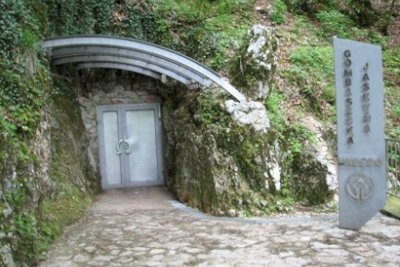
En route from Banska Stiavnica to Kosice, I passed the Slovak Karst area, half of this transboundary WHS near the border with Hungary. A number of caves open to visitors are located here, all well signposted off the main road. Some are still closed at this time of year (notably the Dobsinska Ice Cave). I decided to visit the Gombasecka cave, which is applauded in the Bradt guidebook as one of the most visually impressive.
I arrived at an almost empty parking area. The ticket booth seemed closed too, but when I appeared the window was opened. The entrance fee is 140SK (about 3 EUR) and you only get in with a guided tour. I had to wait an hour for that (Bradt didn't get the opening hours right).
At 1 pm it suddenly got very busy near the entrance. Tens of visitors arrived, mostly regional according to their car plates (Slovak, Czech, Polish, Hungarian). There were so many they even had to split the group into two 'smaller' groups of about 30.
The accessible part of this cave isn't very big, the whole tour takes about 40 minutes. Its key feature is the soda straws, very thin and hollow dripstones. It's certainly nice, but not different from other dripstone caves. I had to look hard for an accompanying picture where it doesn't look like it has been taken at Carlsbad Caverns. But a visit to one of these caves certainly is a nice enough break in …
Keep reading 0 comments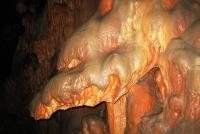
The only thing you really need to know about the Aggtelek Karst caves is that it is an absolutely fabulous place and a true masterwork of nature – just go there as soon as you can.
Once you’ve seen this place you feel like you want to return again and again and discover what’s behind the next cave and the next. The beauty of the shapes, forms and sizes of the stalactites and stalagmites is mind-blowing and it’s no wonder that many poets and painters have been inspired by its bizarre shapes and colours.
The caves are formed in 230 million year old Triassic limestone and about 2 million years ago, water started to get into the cracks, dissolving the limestone, widening the crevices and forming passages. Today there are over 1000 smaller and larger caves and you can visit the most spectacular ones on guided tours. I went for two tours and spent over four hours underground which was quite nice when the outside temperature was +35 and the caves holds a constant temperature of +9.
Aggtelek is not only caves but also a nature area and if you want to stay around for some time I can strongly recommend the Cseppkõ Hotel, run by the nice Mr Jorge, a former Hungarian border guard who knows the town and the area inside out.
Keep reading 0 comments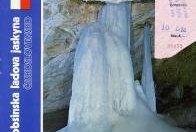
I am afraid this is yet another example of a second rate “WHS “ which adds little to other similar sites already inscribed and which, one feels, has probably been chosen mainly for political reasons (As a transnational site – “it is IUCN’s opinion that this is the best and perhaps only prospect for a World Heritage site in Hungary and Slovakia). Its presence on the list typifies the gradual degradation of standards by UNESCO. The original evaluation is totally “underwhelming” in its enthusiasm for the site –
a. “CASK does not stand out on any particular natural feature. As one reviewer noted, other caves similar to those at Aggtelek exist elsewhere and, while the site is not considered unique, it is an excellent example. Although one of the better known cave areas in Europe it does not offer features in the “spectacular” category as are found in many other Karst areas”.
b. “CASK is very different from the other two existing World Heritage caves. Mammoth Cave is notable for its enormous length, large level passages and jagged domepits. Skocjan is famous for its awesome river canyons and textbook portrayal of karst hydrogeology. CASK is distinguished by its great variety of cave types and speleothems and the array of typical temperate zone karst features. CASK also contains 712 known caves, a very high concentration, but none of these by itself rates on world lists of the deepest/largest or most decorated.”
So don’t expect too much! But don’t get me wrong …
Keep reading 0 comments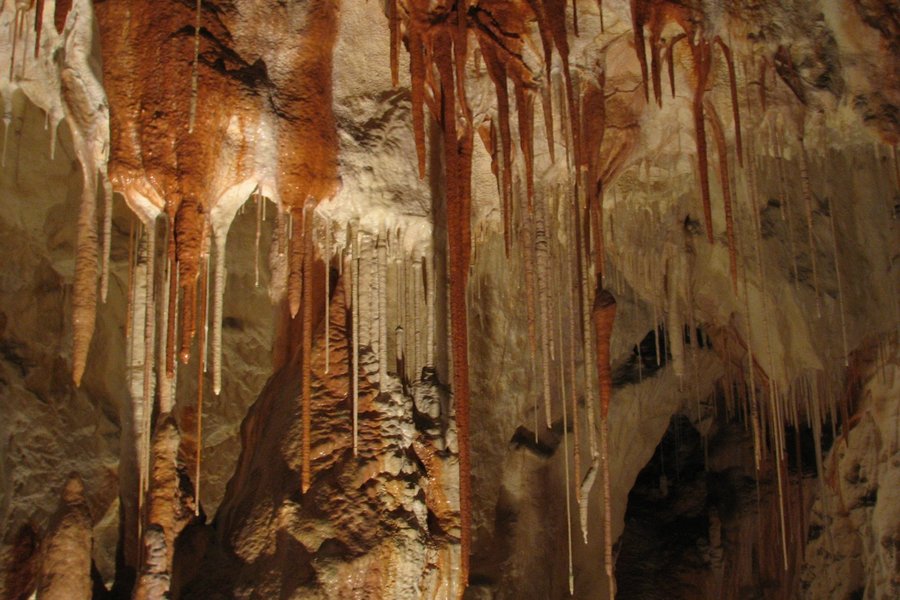
I visited the Dobsinska ladova jaskyna in 2001. Since 1995 I've been in Slovakia about 30 times.
Now I found a terrible negative comment on the main page of WHS of Paul Tanner of the UK about the Dobsinska ladova jaskyna (Dobsinska Ica Cave)
If you know the ice pillars are ALWAYS there in this cave unlike other caves then it is special enough to call it a WHS. Ths has got nothing to do with politics.
The entrance fee nowadays is SK 150,- which equals EUR 3,95 or old DM7,90. So 15 years down the line and taking into account inflation the entrance fee is much lower now.
My opinion: it is an interesting site to visit on a nice walking distance from the railway station as well.
Regards,
Maarten J Vermeulen
Holandsko
Keep reading 0 comments
